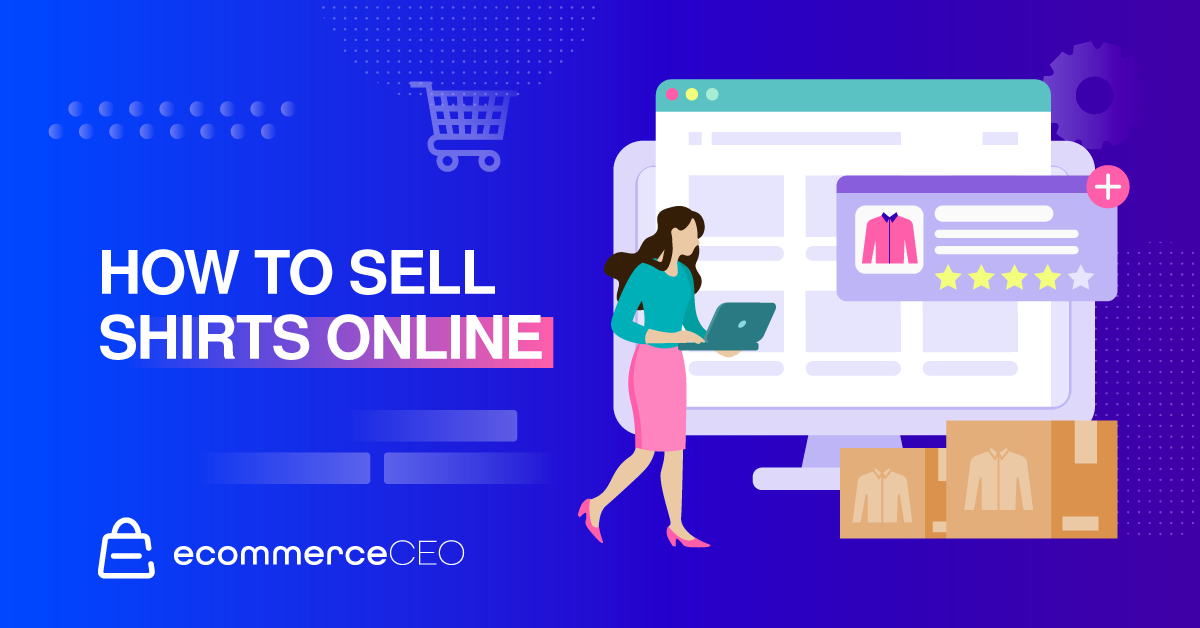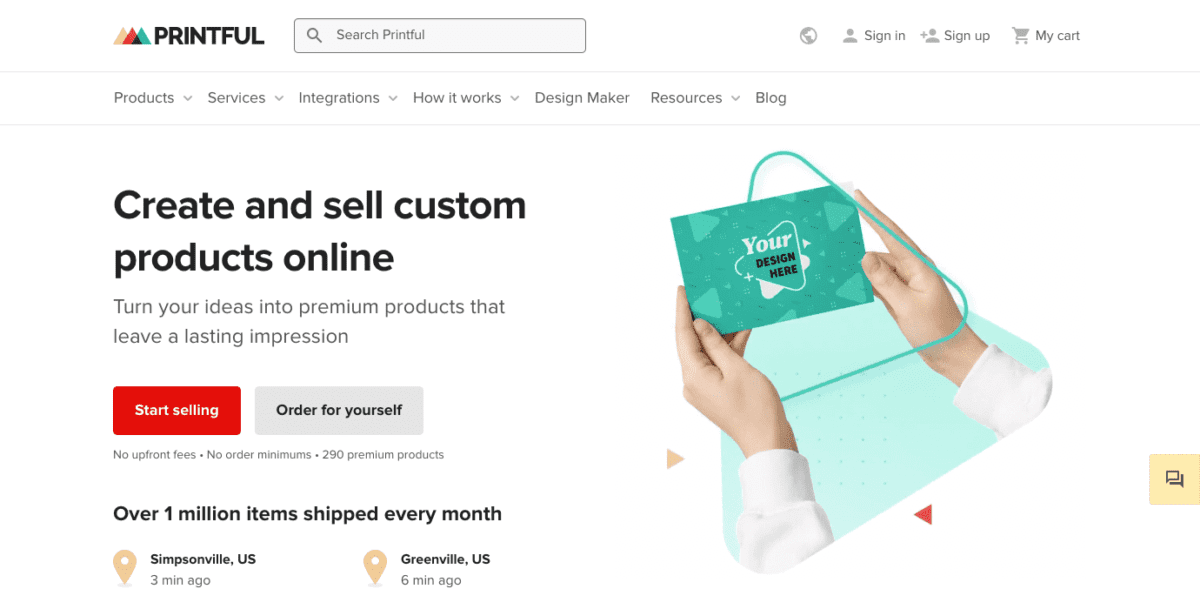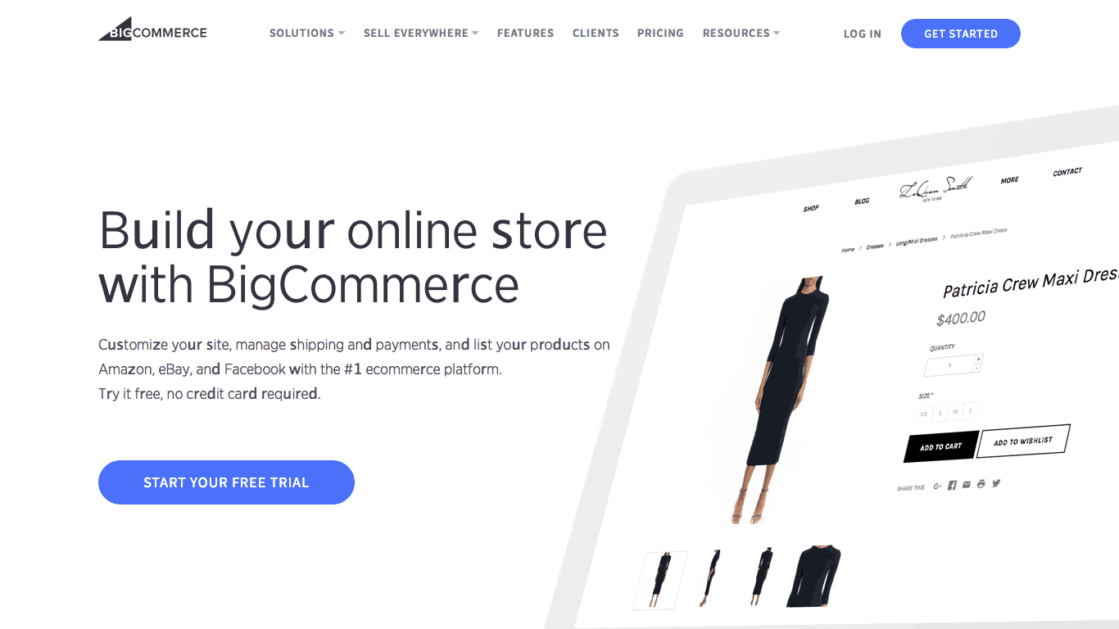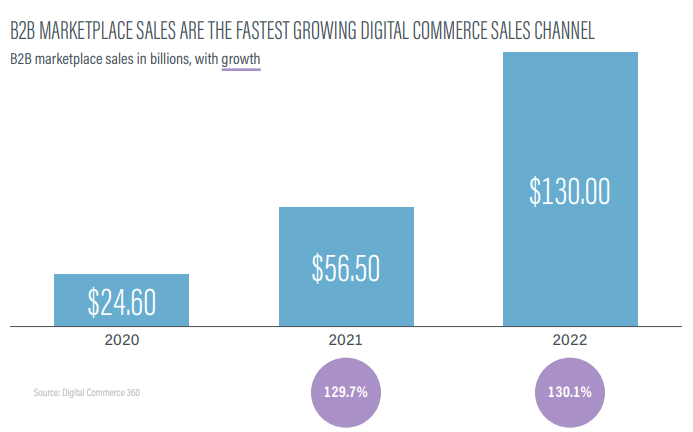Are you thinking about starting your own home-based business selling shirts? In this blog post, we’ll show you how to sell shirts online in seven steps.

From choosing your niche to building your online store and fulfilling orders, we’ll show you everything you need to know and give you some tips to boost sales.
Steps to Start Selling T-Shirts Online
Choose Your Niche
Since there are so many places to buy shirts and no shortage of prints and styles, the best thing you can do for your business is to niche down to something specific. Maybe you sell just women’s clothes or just kid’s clothes.
Start with Interests and Passions
When choosing a niche, it’s important to consider your passions and interests. What are you most passionate about? What do you enjoy?
Try to find a niche that aligns with your passions and interests. Not only will this make starting your t-shirt business easier, but you’ll also be more likely to stick with it in the long run. It won’t feel like work if you’re passionate about what you’re doing.
Conduct Market Research
Market research will determine if there is enough demand for your product. If you’re selling t-shirts, there must be enough people interested in buying them.
Try to find a niche with a large enough potential customer base that you can make some sales and turn a profit.
Use social media, Google AdWords, and other tools to gauge interest in your potential niche before making a final decision. Choosing a niche is an important decision for any new business owner, so take your time and research before settling on one.
Try to Solve a Problem
The most apparent problem someone shopping for t-shirts is trying to solve is covering their clothing needs.
But maybe you want to make it easy for people to find gifts for their loved ones – with quirky sayings or specific sports like roller derby.
Or perhaps, you want to help parents of special needs children by creating a line of adaptive t-shirts for children with limited motor skills or missing a limb.
Or, maybe you want to use a special fabric to help people with sensory processing disorders that make wearing most shirts on the market miserable. (There’s a reason the Hanes Tagless tee works so well!)
Choose Your T-Shirts and Printers
Once you know your niche, it’s time to start looking for suppliers and exploring printing options. Which way you go depends on your experience with the t-shirt industry and how much money you have available to cover upfront costs.
Choose the Type of T-Shirt
Not all t-shirts are the same quality. A 100% cotton shirt will feel different than a polyblend. If you’re targeting people with sensory issues, you’ll want to opt for a fabric with a soft, light feel. Without the proper shirt blank, quality will suffer.
You’re not limited to t-shirts. You can sell tank tops, and hoodies, too.
Decide on Your Printing Method
Just as no two t-shirts are of the same quality, printing methods vary in quality and price. There are a variety of options to choose from:
Direct-to-Garment
DTG printing, or direct-to-garment printing, is a relatively new printing technology that has become increasingly popular in recent years. Unlike traditional screen or inkjet printing methods that transfer ink directly to paper or other materials, DTG printing involves transferring dye directly onto fabric.
Because DTG printing uses special dyes rather than standard inks, the resulting images are much more vibrant and long-lasting. In addition, DTG printers allow for full-color prints in a wide range of designs and patterns, making them ideal for customized clothing and other apparel.
Indirect Screen Printing
Indirect screen printing is used in the printing industry to create high-quality images and designs. This process involves using photo emulsions, developer chemicals, and fine mesh screens to transfer ink onto various surfaces.
Indirect screen printing offers many benefits for businesses and consumers alike, making it a popular choice for applications across various industries.
Screen Printing
Screen printing is a versatile printing technique that involves transferring ink onto a surface using a woven screen made of plastic or other materials. During the printing process, the screen is evenly coated with ink and then pressed against the substrate being printed on.
The ink is forced through openings in the screen, leaving precise images and designs on the substrate. Screen printing can produce all types of printed materials, including textiles, posters, packaging labels, and more.
Because it allows for such precise control over image placement and color saturation, screen printing is a highly versatile technique that can be used for small-scale craft projects and high-volume manufacturing processes.
Vinyl
Vinyl is a versatile material used to make a wide range of products, including everything from custom t-shirt designs to signage and vehicle decals. Vinyl is an ideal material for these products because of its tough, durable nature.
Vinyl is made with several tightly bonded layers, so it can stand up to wear and tear over time. In addition, vinyl tends to be fairly easy to cut and shape into various shapes and sizes, making it the perfect choice for custom t-shirt designs.
And because vinyl adheres easily to fabric surfaces like cotton or polyester t-shirts, you won’t have to worry about your design faltering over time.
Heat-Press Printing
This process involves using heat and pressure to transfer ink or dye onto the shirt’s fabric, resulting in crisp images and bold colors that are sure to grab attention.
One of the main advantages of heat-press t-shirt printing is that it allows for extremely high levels of customization and personalization. Users can choose from various ink colors, image types, and even materials. In addition, the results are quick and easy to achieve.
Sublimation
Sublimation t-shirt printing is a highly specialized technique for creating vibrant, full-color designs on t-shirts and other clothing.
This printing method works by using heat and pressure to transfer ink directly from a solid or liquid state onto the surface of the fabric. The inks are closely matched to fabric colors so that each print appears as vivid and rich as a photograph.
This type of printing is best for images with dynamic color palettes or complex gradient effects, as well as detailed lines and fine text since these areas can more easily be produced without unsightly streaks or blotches.
Heat Transfer Inkjet Printing
This technique involves using your inkjet printer to print the design and then transferring it to the shirt with heat from a heat press or an iron.
Choose Sustainability When Possible
To do your part to protect the environment, and to attract customers, choose sustainable products and processes when possible because clothing has a huge environmental impact.
Make an effort to work with suppliers that use responsible manufacturing and give back to their community, such as Bella + Canvas, Allmade, Alternative Apparel, and American Apparel.
Create and Mockup Designs
Here comes the fun part – creating your designs! If you’re stuck for ideas, check out online marketplaces like Teespring to see what’s selling well and use that for inspiration.
Develop Designs Yourself

You don’t have to be a graphic design professional to create designs that will sell. You can use tools like Canva (free and Pro) to help you come up with your own designs. Just be sure you pay attention to the licensing on any graphics you use, as Canva Pro doesn’t always support commercial use.

Marketplaces like Creative Fabrica sell images you can use with commercial licensing, and some even have print-on-demand licensing. You could easily start your online t-shirt business with these. However, it’s important to remember that you could be competing with countless other stores that sell the same designs.
That’s why, if at all possible, we recommend creating unique designs that no one else has.
Canva has templates and mockup tools to help you create product images before you ever make a single shirt. You can also use Envato Place It.
Mockups can work in place of traditional product photography until you get people wearing your shirts. It’s a good idea to order some shirts from print on demand (or make them yourself) to use in product photos.
Outsource to Experts
Hire a graphic designer to take care of designing your t-shirts for you. With platforms like Fiverr and Upwork, you can get several designs to open your own online store.
As you grow, you can continue to work with the same designers or expand your portfolio with work from other artists.
Test Your Concepts
Before you spend money printing inventory that may not sell, it’s best to test your concepts, so you’re sure you’ve got a great design.
Join Relevant Facebook Groups
Find Facebook groups where your target customers are, and start participating. There are plenty of options on the platform, specifically for t-shirt sellers to share their work and connect with potential customers.
Participate in Online Communities
Reddit is full of subreddits where you can get feedback to help you validate your ideas. Check out various subreddits where your target customers spend their time and participate actively.
Reddit isn’t a place known for marketing, so if you’re not actively providing value to the subreddit, you won’t get much from it.
Talk with Friends and Family
If your friends and family fit into your target audience, ask them to share their thoughts about your designs.
Ask them to share with their friends and family to broaden your pool of feedback. Share your t-shirt mockups on your personal social media accounts and ask for input. (Be sure to watermark them so no one else can steal your ideas before they’re available for sale.)
Run Paid Advertising Campaigns
Run paid advertising campaigns to a survey that asks people to pick their favorite designs. From there, allow people to leave feedback about each design to help you see where (if at all) you should make adjustments.
Establish Printing and Fulfillment Operations
Printing Yourself vs. Print on Demand Service
If you have the equipment to handle printing your own shirts, you may want to try printing them yourself when you first get started.
You don’t need to invest in screen printing equipment or learn the skill, either.
If you’ve got a Cricut, Silhouette, or similar cutting machine that works with heat transfer vinyl, you can easily create and upload designs to the software, cut them, and press the shirts yourself with heat transfer paper.
Or, if you’re working with a high polyester blend, you can use infusible ink. This direct-too-garment printing method is highly popular.
If you’d rather not invest in equipment or take the time to learn how to use it, then print-on-demand (POD) is your best bet.

POD has low startup costs and less hassle compared to purchasing your own equipment and running the printing operations yourself. You also won’t have to deal with inventory management.
With POD, the provider will print your customer’s shirt when the order is placed. They’ll charge you a set amount, and you’ll keep the difference between that fee and your sales price as profit.

You won’t have as much control over your profit margins with services like Printify and Printful, but you can trust you’ll have a quality product since you’re working with professional printers.

POD is a cost-effective business model that works well for many entrepreneurs.
Self-Fulfillment vs. Third-Party Options
With POD, you won’t have to fulfill the orders yourself because the company will ship orders to your customers on your behalf.
If you’re making the shirts yourself, you may also want to ship products yourself. In the beginning, when you’re only selling a few shirts a week, this is a feasible way to handle it.
You can sign up for a shipping service like ShipStation or Shipping Easy that will leverage discounts with USPS to help you save money.
But as you grow, you may not have enough time to package and ship or room in your home to store the inventory.
If it’s taking over your garage, dining room, or guest room, that’s a sign it’s time to scale up your operations and involve a third-party solution. If you find yourself spending all your extra time on
Working with a partner like ShipBob will take the order fulfillment process away from you and put it in the hands of experts.
You’ll have more time to focus on other aspects of your ecommerce business, such as marketing and customer service.
Set Up Your Online Store
Choose Your Ecommerce Platform
With so many ecommerce platforms out there, it can be hard to choose, but what matters most is that:
- It’s easy for you to use
- It has integrations with print-on-demand sites if you’re using that approach to fulfill orders.

For this, we recommend Shopify and BigCommerce, as they both have integrations with Printful and Printify. They’re super easy to use and require no technical knowledge to set up your storefront.

Determine Shipping Locations and Options
Will you offer international shipping? How will you ship your shirts?
You can ship with any number of carriers, but you won’t get the best possible rate as an individual.
Unless you’re working a print-on-demand platform and dropshipping t-shirts, you’ll either be sending the shirts yourself or shipping them off to a 3PL to handle fulfillment for you.
This can affect your shipping locations and options, too.
Set Up Payment Gateways
Customers need flexibility in how they pay you. Most ecommerce platforms let you choose the payment gateways you want to use, but all of them will come with credit card processing fees.
After you choose the ones you want to work with, set them up, and connect your bank accounts, you’ll receive payments whenever someone orders.
Start Selling
Leverage Influencer Marketing
When you’re first starting your t-shirt business, using influencer marketing can help you spread the word about your brand and designs. Invest some money in working with influencers who have audiences like the ones you’re trying to reach.
You can scour the internet to find these influencers yourself or partner with an influencer marketing platform that will help you do the work.
And working with influencers doesn’t mean spending millions of dollars on getting A-list celebrities to wear your shirts. You can get by on a smaller budget with micro-influencers. Those influencers often have higher engagement rates than celebrities anyway.
Use Retargeting Campaigns with Facebook Ads
By installing the Facebook Pixel on your website, you can reach people who’ve visited your website (or specific pages) while they’re browsing Facebook.
Start an Email Newsletter
As you gain subscribers, you can send out messages to let people know when you’re having a sale or releasing new designs.
Run a Contest on Social Media
One of the fastest and easiest ways to get your custom t-shirts in the hands of customers is to run social media contests. You can do this on your own or with a platform like Rafflecopter.
Tips for Selling T-Shirts Online
Focus on Quality and What Makes Your Business Different
There is certainly no shortage of places to buy t-shirts both online and off. That means you’ll need a quality product to stand out from the rest of the crowd.
But even a quality product isn’t enough to make that much of a difference in a market where there are tons of places to shop.
Think about how your business is different from the rest. Then, craft that into your brand story and the rest of your marketing.
Start Small
Even if you’ve got plenty of well-tested t-shirt ideas ready to go, start small to make sure the market responds the way you think it might. This way, you’re not pouring your entire life savings into a business that may falter.
Presell New Designs
If you want to test a new t-shirt design idea without investing in production, you can run a presale on it. If you don’t get many orders, then you know it’s not likely to sell well, so you don’t have to print a huge run.
Register Your Designs for Copyright
Technically speaking, the second you create your designs, they become your intellectual property. But unless you actually file those designs with the U.S. Copyright Office, you’ll have no recourse if you see someone else selling a design you’ve created but not licensed to others for commercial use.
You’ll file a visual arts application for each work unless you have enough to file a group application for up to 10 unpublished works. Fees apply.
FAQs
Start Selling T-Shirts Today
Don’t let the fact that the market feels saturated stop you from selling t-shirts online. Research shows the global custom t-shirt printing market was worth $3.9 billion in 2021. It’s expected to grow at a compound annual growth rate (CAGR) of 9.9% from 2022 until 2030.
Whether you grow into your own boutique or start a clothing line, or keep it a side hustle, selling clothes online is a great way to make a lot of money.





